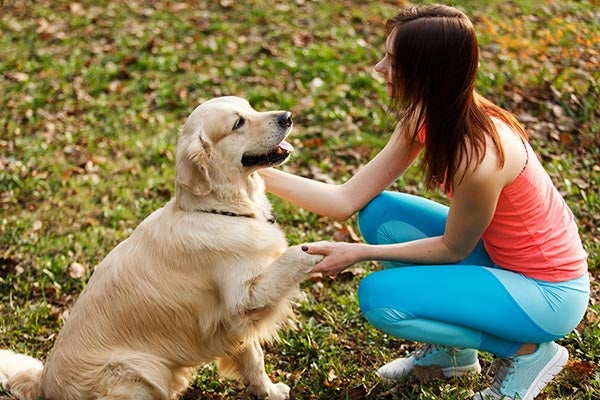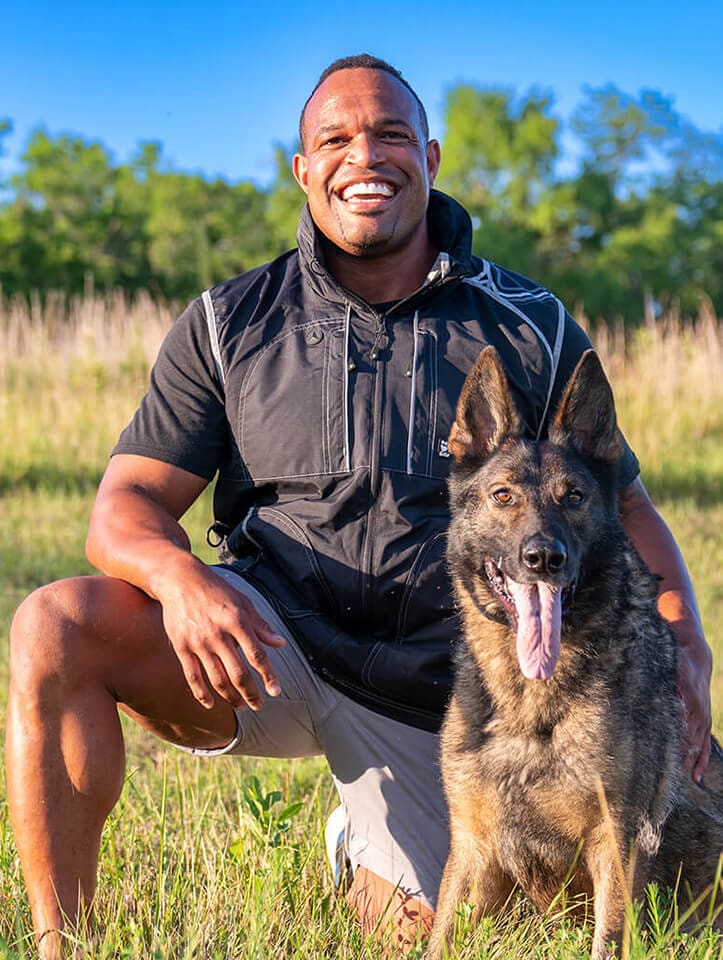Find reliable Nearby dog trainers for personalized training sessions.
Find reliable Nearby dog trainers for personalized training sessions.
Blog Article
Master Necessary Commands: Efficient Pet Educating Made Easy
Effective pet dog training is an essential aspect of accountable family pet ownership, and grasping essential commands serves as the foundation for an unified relationship between handler and dog. Understanding the nuances of canine habits and the training procedure is essential; nonetheless, the trip to a trained pet usually provides unforeseen obstacles that need attention.
Comprehending Your Canine's Behavior
To understand the subtleties of reliable canine training, it is necessary to damage down and analyze your pet dog's behavior. Dog training. Recognizing the inspirations behind your pet's activities is critical; behaviors can stem from impulse, concern, exhilaration, or a wish for focus. By observing your dog in numerous scenarios, you can identify patterns that may indicate underlying emotions or needs
For example, a pet that barks exceedingly might be expressing monotony, stress and anxiety, or a demand for social interaction. Conversely, a pet dog that shows harmful habits may be looking for stimulation or alleviation from tension. Recognizing these triggers enables you to customize your training strategy efficiently.
In addition, it is essential to think about the canine's breed attributes, as they can influence habits significantly. Some breeds are inclined to details attributes, such as herding or protecting impulses, which can affect their responses to certain stimuli.
Finally, uniformity in your actions to your dog's actions cultivates a far better understanding in between you and your pet. This common comprehension is fundamental for building trust and promoting a reliable training process that supports both behavioral adjustment and favorable support.
Vital Commands to Instruct
Teaching important commands is a fundamental facet of effective pet training, offering the foundation for a mannerly and receptive animal. These commands not only improve interaction in between the owner and the pet dog however also guarantee safety and security in various settings.
The most critical commands consist of "Sit," which encourages your canine to remain fixed and tranquil; "Remain," which reinforces the idea of remaining in one location up until released; and "Come," which is essential for recalling your pet dog from possibly unsafe situations. "Down" teaches dogs to lie down, promoting relaxation and control, while "Leave it" assists avoid dogs from grabbing dangerous or undesirable products.
" Heel" is another important command that encourages your pet dog to walk carefully next to you, enhancing chain manners. "No" serves as a crucial boundary-setting command, helping to correct undesirable behaviors.
Training Strategies for Success
Effective pet training depends greatly on employing a selection of strategies that click here to read cater to both the pet dog's discovering design and the owner's training objectives. One crucial technique declares reinforcement, which includes gratifying preferred actions with treats, appreciation, or play. This technique urges the pet to duplicate those behaviors, promoting a solid bond in between proprietor and pet.

Another effective technique is clicker training, where a distinct sound, made by a remote control, notes the specific moment a canine performs a desired action. This precise timing helps canines associate the habits with the benefit, improving their understanding.
Uniformity is essential in all training techniques. Developing clear commands and maintaining the exact same cues helps the pet understanding assumptions more swiftly. In addition, brief, engaging training sessions stop boredom and boost retention.
Incorporating socializing chances is also crucial. Subjecting pet dogs to numerous settings, individuals, and other animals helps them develop self-confidence and versatility.
Finally, persistence plays a significant role in effective training - Dog training. Each pet dog discovers at their very own pace, and comprehending this can bring about a much more pleasurable training experience for both the proprietor and the dog. Carrying out these strategies will certainly establish the structure for reliable dog training
Typical Obstacles and Solutions
Regardless of the finest training strategies, dog proprietors typically encounter typical obstacles that can hinder development. When household participants use different commands for the same behavior, it puzzles the dog, leading to inconsistent responses.

Additionally, some canines may display stubbornness or lack inspiration. This can commonly be dealt with by integrating positive support methods, such as treats or appreciation, to encourage preferred habits. Tailoring rewards to what your pet locates most inspiring can significantly boost their involvement.
Last but not least, worry or anxiousness can impede development in training. Identifying indications of tension and changing the training speed appropriately is important. Utilizing gradual exposure to been afraid stimulations can help build confidence in time, promoting a more efficient training experience.
Keeping Consistency and Persistence
Uniformity and patience are critical in dog training, as they develop the structure for accomplishing lasting behavioral adjustments. Canines prosper on routine and clear expectations; therefore, maintaining a constant approach in commands, incentives, and modifications is necessary. When instructors utilize the exact same cues and signals reliably, pets are better able to comprehend what is being asked of them. Incongruity can cause confusion and irritation, weakening the training process.
Similarly important is the function of persistence. Training a pet is not an immediate process; it calls for time and repetition. Pets, much like human beings, have varying learning speeds and might not comprehend commands quickly. Fitness instructors must acknowledge this and remain tranquil, providing encouragement instead than disappointment. Positive reinforcement plays a vital role right here, rewarding desired actions and helping to foster a trusting partnership between the pet and instructor.
Verdict
Understanding vital commands is essential to reliable dog training, fostering improved communication and reinforcing favorable actions (Dog training). Inevitably, a well-trained pet not only shows great actions but additionally creates self-confidence, contributing to an unified partnership between the canine and its owner.
Report this page